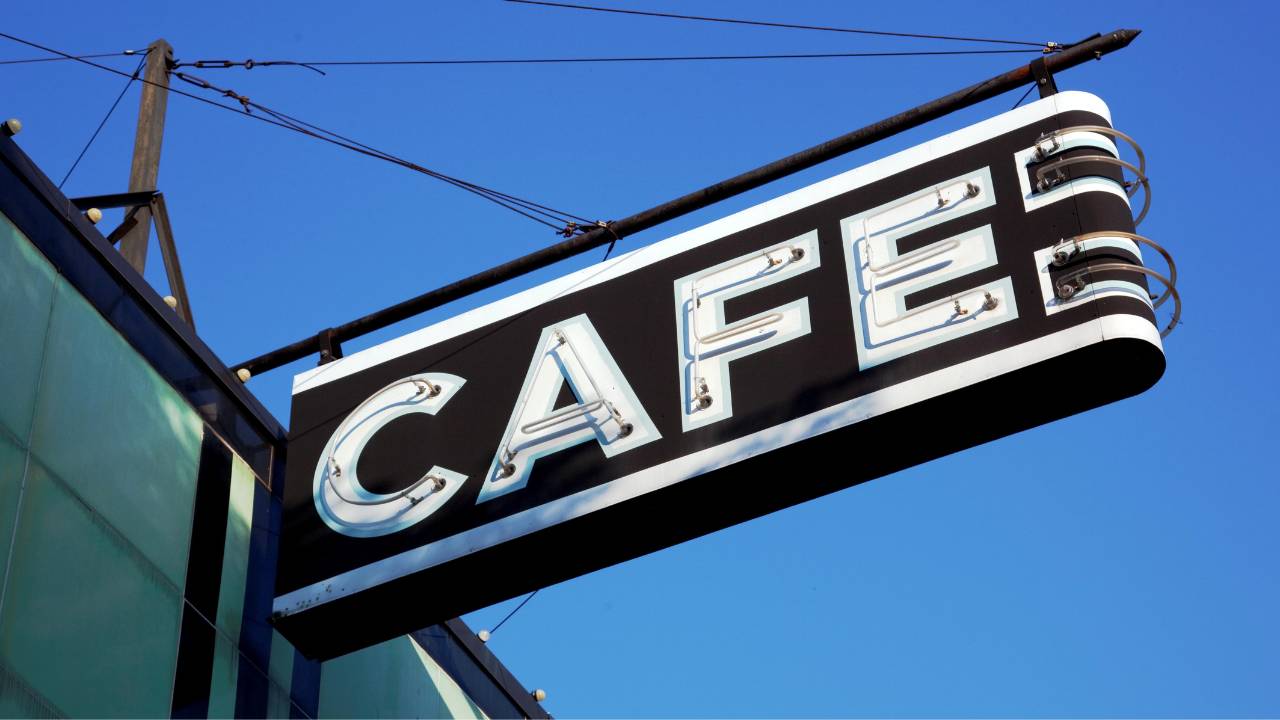Creating compelling business signage is an essential aspect of your marketing strategy. As you design your signs, it is crucial to strike a balance between eye-catching visuals and informative content. An effective sign will not only capture the attention of potential customers but also convey your message clearly and concisely.
To help you achieve the best results, there are numerous factors to consider, such as the location, target audience, and your business branding. It’s vital to understand that your signage should reflect your company’s values and ethos, as well as be visually appealing and legible from a distance.
The Importance of Business Signage
When it comes to promoting your business, effective signage plays a crucial role in grabbing the attention of potential customers and creating brand awareness. By investing in eye-catching and memorable business signs, you can make a lasting impression on your target audience, helping to drive customer engagement and, ultimately, success.
One of the primary purposes of business signage is to inform and guide customers, drawing them into your establishment and influencing their purchasing decisions. A well-designed sign can effectively convey your brand message, setting you apart from the competition and building trust with your audience.
Your business signage should not only showcase your company’s identity but also project professionalism and credibility. With the right blend of colours, fonts, and materials, you can create an easily recognisable visual that will entice potential customers to explore what you have to offer.
In addition to being aesthetically pleasing, your sign should also provide clear and concise information. This can include your company’s name, logo, directions, product offerings, or unique selling points. To ensure your message is effective, choose a suitable size and placement location for your sign, considering factors such as visibility, foot traffic, and local regulations.
Remember, a well-placed and engaging sign can contribute significantly to your return on investment (ROI) by attracting customers, both new and returning, to your business. Whether you operate a retail store, restaurant, or service-based company, investing in effective business signage is a small cost for a potentially significant long-term gain.
Considerations for Designing Effective Signage
When designing signage for your business, it’s important to create a visually appealing and compelling design that effectively conveys your message. Here are some key aspects to consider when creating your signs:
First, think about the contrast between the text and background colours. High contrast is important to improve readability, especially from a distance or in limited lighting. Bold combinations like black and white, red and yellow or green and white are commonly used for maximum visibility and impact.
Typography plays a critical role in effective signage design. Make sure to choose a legible font that’s easily readable from a distance. Avoid overly decorative or flowery fonts, as they can be difficult to read quickly. Additionally, consider the size of the text; larger text is easier to read from a distance, but be mindful of overcrowding your sign or sacrificing design elements for oversized text.
Colour choice also impacts the effectiveness of your sign. Select colours that are on-brand and consistent with your company’s identity, but also consider the psychological impact of colours on the viewer. For example, red often evokes excitement and urgency, while green conveys calmness and growth, and yellow suggests happiness and optimism.
In terms of layout, keep it simple and balanced. Use white space effectively to ensure your design isn’t cluttered or overwhelming. Furthermore, you may want to consider incorporating 3D rendering or other creative design elements to make your signage stand out in a competitive environment.
Lastly, remember to always follow local regulations and requirements for signage design and placement. Ensuring your signs are in compliance will save you time and resources in the long run.
The Role of Professional Designers in Business Signage

Creating an effective and eye-catching sign for your business may seem like a simple task, but there is much more to it than meets the eye. A professional designer can help you navigate the complex world of sign design to create one-of-a-kind, appealing, and functional on-premise signage. In this section, we will explore the role of professional designers in business signage and how they contribute to the success of your brand.
First and foremost, engaging a professional designer ensures that your business sign is visually striking, aligns with your brand identity, and effectively catches the attention of passersby. With years of experience and skills in typography, colour theory, and graphic design, these professionals can help you create a unique and impactful sign that supports your business goals.
Moreover, a designer will take into consideration factors, such as visibility, readability, and accessibility, that are vital for the effectiveness of on-premise signage. They know how to create signs that are easy to read from a distance and are compliant with local regulations and guidelines. This knowledge helps prevent potential issues and ensures a hassle-free expert signage installation process.
Finally, utilising the services of a professional designer means your business signage will be crafted with quality materials and expert techniques, ensuring its long-lasting durability and aesthetic appeal. This is crucial because a well-made sign not only reflects positively on your brand but also saves you money on maintenance and replacement costs in the long run.
Branding and Business Signage
Creating effective business signage is crucial for your brand recognition and recall. When designing your sign, it’s important to consider the components that make up your brand identity and how they will be translated into the signage.
Your logo, as a central part of your branding, should be prominent on your business sign. Ensure that it is clear, visible, and easy to understand. Keep in mind that your logo should be scalable, as it will be displayed on a variety of materials and surfaces. Don’t be afraid to experiment with different colours and styles for your logo, but always maintain consistent branding across all your marketing materials.
Your business name is another essential aspect of your branding and should be displayed prominently on your sign. Select a font that complements your logo and represents your brand values. Use a typeface that is easy to read and will be identifiable from a distance. If you’re looking to create a sense of familiarity and trustworthiness, consider using a serif font. For a more modern and approachable feel, a sans-serif font may be more appropriate.
Now let’s dive into some tips for designing an effective business sign:
- Contrast: Use contrasting colours for the background and text or logo to enhance readability. Light text on a dark background or vice versa will catch the eye more effectively.
- Simplicity: Keep your sign clutter-free. A minimal design with key elements such as your logo, business name, and a simple message or call to action will be more effective than a cluttered, overdesigned sign.
- Consistency: Ensure that your signage is consistent with your brand’s overall aesthetic and messaging. Avoid using too many different colours, fonts, or styles, which may confuse your audience.
Types and Materials of Business Signage
Choosing the right type and material for your business signage is essential for achieving the desired impact. In this section, we’ll discuss various types of signage and the materials commonly used for them.
Indoor Signage can help you convey information, direct customers and promote your brand within your business premises. Some popular types of indoor signs include:
- Wayfinding signs
- Wall graphics
- Window decals
These signs are often made from materials like acrylic and substrate due to their durability and easy maintenance.
Outdoor Signage is crucial for attracting customers to your business and reinforcing your brand identity. A few common outdoor signs are:
- Billboards
- Pylon signs
- Light-up signs
Primary materials for outdoor signs include aluminium and vinyl banners, providing the necessary robustness to withstand weather conditions.
Digital Signage is becoming increasingly popular. It’s a versatile and eye-catching solution for both indoor and outdoor applications, and an excellent option for businesses seeking to stay ahead in the digital age. You might see digital signs as:
- Menu displays
- Promotional screens
- Information kiosks
Digital signage allows for content updates and customisation, making it a wise investment.
Location and Placement of Business Signage

Choosing the right location and placement for your business signage is crucial in attracting potential customers. This ensures your signs are highly visible, reaching the maximum number of passers-by. Here are a few key aspects to consider when deciding where to place your business signs.
First and foremost, consider the foot traffic surrounding your business. You want to position your exceptionally designed signage where it can be seen by the highest number of people every day. Ideally, place it in an area that gets a substantial amount of pedestrian and vehicular traffic. This could be near a busy intersection, a popular shopping area or close to public transport hubs.
Your signage should be visible from a distance and at various angles. Make sure it’s not obstructed by other structures or fixtures, like trees or lampposts. Building signs should be placed high enough to be seen from afar while still being easily readable. On the other hand, window signs should be close to eye level, allowing pedestrians to see them without straining.
When it comes to multiple signs, proper placement can boost your overall visibility. Strategically positioning building and window signs to complement each other can create a stronger visual impact, drawing more attention to your business. Remember, consistency in design and messaging across all your signs is essential for creating a professional and unified image.
Installation of Business Signage
Proper installation is crucial when it comes to installing your business signage. Not only does it ensure that your sign is visible and attractive, but it also guarantees safety for both employees and customers. Keep these tips in mind as you plan your signage installation.
To begin with, make sure you choose a suitable location for your sign. This means placing it where it’s easily visible from a distance, not obstructed by trees, buildings, or other objects. Ensure it’s in a position where it can be easily maintained and lit if necessary.
For flexibility, consider investing in portable signage. Portable signs can be easily moved from one location to another, allowing you to tweak the placement as needed to maximise visibility and impact. This can be particularly helpful for businesses that frequently attend events, exhibitions, or change locations.
When it comes to durability, the materials that you choose for your signage will play a significant role. Opt for weather-resistant materials like vinyl, aluminium, and outdoor-grade plastics to ensure that your sign remains in good condition regardless of the elements. This way, your investment is protected and your sign remains effective for an extended period of time.
During the installation process, always follow regulations and guidelines to avoid potential hazards. Seek assistance from experienced professionals if you are unsure about the proper procedures for installation. Professional installation ensures that your sign is securely mounted and will withstand any environmental factors.
Finally, don’t forget about maintenance! Regular cleaning and upkeep keep your sign looking fresh and appealing. By maintaining your signage, you ensure that it delivers the intended impact on your target audience, ultimately contributing to your business’s success.
Marketing and Advertising with Business Signage
In the world of marketing and advertising, it’s essential to stand out and make an impact on your target audience. One of the most effective ways to achieve this is through the use of business signage. When used correctly, signage can be a powerful marketing tool, helping you stay ahead of the global competition and keep up with your competitors.
The first step in developing an effective signage strategy is understanding your target audience. Knowing who your customers are will enable you to design signage that appeals directly to their needs and preferences, increasing the chances of drawing them into your business. Consider demographics such as age, gender, and location when designing your signs, as well as personal interests and specific market trends.
Once you know your audience, it’s crucial to make your signage stand out from the crowd. Your signs should be visually appealing, with bold colours and eye-catching designs that reflect your brand identity. At the same time, keep your messaging concise and straightforward, ensuring that passers-by can easily understand what your business has to offer.
Moreover, it’s essential to incorporate modern technologies into your signage strategy. Digital signs and LED displays can add an extra level of interactivity and flexibility, allowing you to update your marketing messages regularly and stay current with trends in your industry.
To maximise the effectiveness of your business signage, consider the following tips:
- Placement: Position your signs in high-traffic areas where they’re most likely to be seen. Think about locations near entrances, at eye level, and in areas where customers typically congregate.
- Consistency: Ensure that your signage follows a consistent design theme, reflecting your overall brand identity. This includes colours, fonts, and graphics.
- Readability: Choose fonts that are easy to read, and avoid cluttering your signs with too much information. Use headings and bullet points to break up text where appropriate.
- Call-to-Action: Encourage customers to take action by incorporating a clear, compelling call-to-action in your signage. This could be anything from “Visit us today” to “Join our mailing list” or “Follow us on social media”.
Regulations and Requirements of Business Signage

When it comes to creating effective business signage, you need to be aware of the regulations and requirements that apply to your signs. These can vary depending on your location, type of business and the nature of your signage.
Firstly, check the local council and government regulations that apply to your area. These may include restrictions on the size, placement or style of signs you can use. It is essential to follow these guidelines to avoid fines or having to remove your signage.
You should also consider the requirements of any landlord or property owner involved. If your business is in a leased building, there might be rules about the type, size, and colour of signage you can use. Be sure to check the lease agreement and consult with the property owner before installing any signs.
Depending on the type of business and location, additional regulations may apply. For example, certain industries are subject to specific rules that govern advertising and signage. This might include displaying necessary licences, disclaimers or warnings on your signs. Make sure you research and understand the specific regulations that apply to your business.
To ensure your signage is accessible and complies with regulations, consider the following:
- Be aware of any restrictions on illuminations, animations or flashing lights, particularly if your business is near residential properties or traffic lights.
- Cater to accessibility by using clear, legible fonts and contrasts in colour. This will make your signs easier to read for your customers.
- Provide adequate space for wheelchair users and maintain a clear line of sight for both pedestrians and drivers.
- Make sure any planning permissions or licences are obtained before installing your signage.
The Role of Signage in Different Businesses
When it comes to effective business signage, understanding the specific role that signs play in various industries will help you make the right choices for your own needs. In this section, we’ll explore how signage contributes to the success of different types of businesses, such as shops, restaurants, and retail spaces.
For shops, signage is essential in attracting customers and guiding them through the store’s layout. Your shop’s exterior signs should be eye-catching and speak to the core values of your brand while also offering necessary information. Inside the shop, consider using:
- Directional signs: To help customers easily navigate the store
- Product signage: To highlight new arrivals or special offers
- Pricing information: To clearly display prices for items on shelves
Restaurants also rely heavily on effective signage to create a welcoming atmosphere and communicate important information to customers. Some key aspects to consider include:
- Menu boards: To display meal choices and prices
- Special offer signs: To highlight daily or weekly specials
- Event posters: To promote upcoming entertainment or themed nights
Retail signage is fundamental for businesses, regardless of their size. In a competitive market, getting the attention of potential customers is crucial. Here are some retail signage elements you may want to implement:
- Promotional signs: For sales or discounts
- Window displays: To showcase new products or seasonal items
- Store policy signs: To inform customers about your exchange and return policies
Finally, local businesses can benefit from targeted signage that appeals to nearby residents and passers-by. Some tips for creating effective local signs include:
- Including the local community’s identity in the design
- Promoting special deals exclusive to the area
- Displaying the businesses’ involvement in community events or sponsorships
In conclusion, remember that your signage is an essential part of your overall branding strategy and plays a critical role in attracting and guiding customers. Customise your signs to suit the specific needs of your business type, and always keep your target audience in mind.
Conclusion
In the end, effective business signage plays a crucial role in capturing the attention of potential customers and enhancing your brand’s visual presence. To make the most of your signage, focus on creating eye-catching designs with consistent branding elements, such as colours and fonts.
